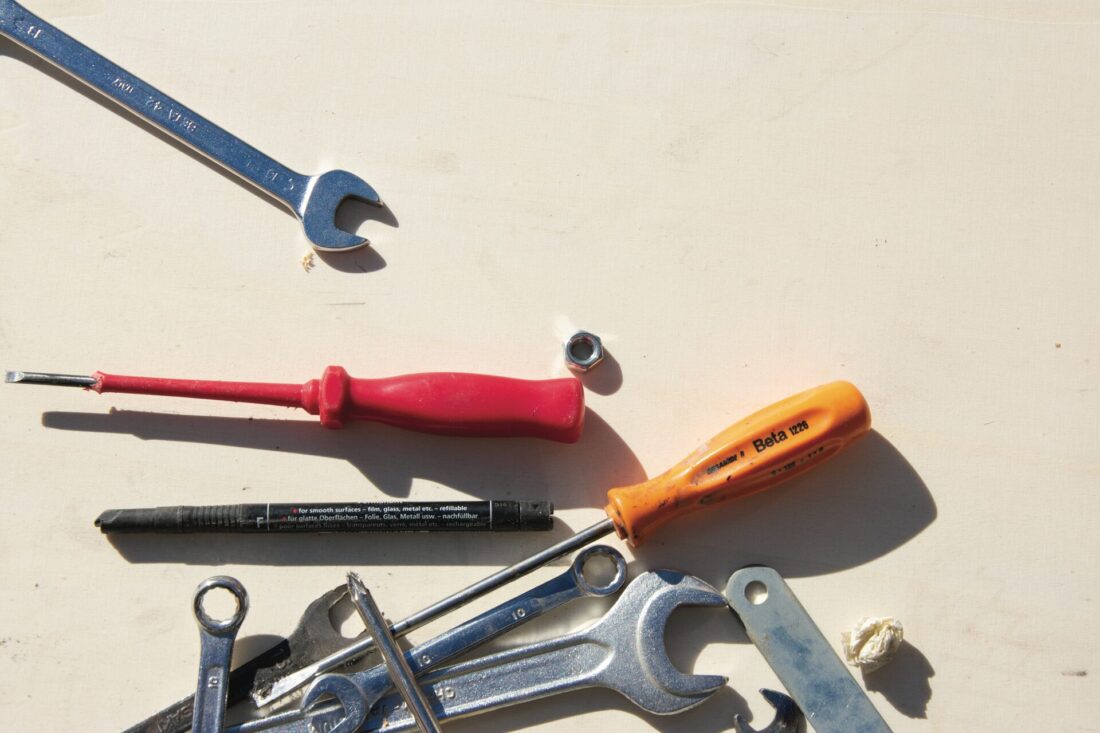Moving your beloved outdoor sanctuary can be quite a challenging task, but fear not! In this comprehensive guide, we’ll walk you through the step-by-step process of how to move a gazebo. Whether you’re planning a backyard makeover or relocating to a new home, learning how to do this doesn’t have to be a headache. So, grab your tools, put on your thinking cap, and get ready to make the “relocation adventure” a breeze!


We recommend starting by assessing the gazebo’s size and weight to determine if it can be disassembled for easier transportation. Take detailed photographs and measurements to aid in the reassembly process later. Next, gather a team of helpers to assist you in dismantling it, ensuring each part is labeled and organized for convenient reassembly. Secure any loose or delicate components, such as glass panels or decorative elements, to prevent damage during transit. Lastly, ensure you have the necessary equipment, such as straps or a flatbed trailer.
How to Move a Gazebo – Assess the Situation First
Before embarking on the daring endeavor of relocating your summer haven to another home, it’s crucial to assess the situation with a discerning eye. Take a moment to ponder: why must this enchanting possession seek a new dwelling? Is it yearning for a change of scenery or seeking fresh admiration from a different vantage point?
Once you’ve unraveled the gazebo’s secret desires, turn your attention to the current abode and the destination that beckons. Plan the relocation, and delve into the intricacies of both locations, considering the lay of the land, the architectural dance, and potential obstacles that could hinder your gazebo’s smooth transition.
Beware of common relocation mistakes that may lurk in the shadows. Measure doorways, pathways, and clearances diligently to evade any unintended “Oops!” moments. By crafting an efficient relocation plan, executing the move with finesse, and avoiding relocation blunders, you’ll guide your cherished gazebo to its new home effortlessly.
The Difference Between a Gazebo and a Pergola
Let’s start with some basic information and explain the difference between gazebos and pergolas. The key differences lie in their design and functionality. Gazebos, with their octagonal or hexagonal shape and covered roof, offer a completely sheltered space, perfect for hosting gatherings or enjoying serene moments.
Pergolas, on the other hand, feature an open framework with cross beams and an open roof, providing partial shade and an airy ambiance. While gazebos are often seen as standalone structures, pergolas can be attached to a building or used to create an outdoor extension.
When it comes to relocation, gazebos, due to their complete structure, may require hiring long-distance movers for a seamless relocation. Pergolas, with their more open design, can be disassembled and relocated more easily.
When packing, it’s important to consider what to keep and what to leave behind, ensuring you bring along the necessary components for reassembly. Unpacking after the relocation and reassembling the gazebo or pergola in its new location will allow you to reclaim your outdoor oasis and continue enjoying its beauty and functionality.


Gathering the Necessary Tools and Equipment
When it comes to moving gazebos, having the right tools and equipment can make all the difference. Here’s a list of essentials to gather:
- Screwdrivers and wrenches: These will be necessary for dismantling and reassembling the gazebo’s structure.
- Hammer and rubber mallet: Useful for gently tapping and securing parts in place.
- Power drill: Speeds up the disassembly process, especially for larger gazebos with numerous screws.
- Moving blankets and bubble wrap: Protect fragile components, such as glass panels or decorative elements, from potential damage during transit.
- Straps and ropes: Securely fasten parts together and prevent them from shifting during transportation.
- Tarps or plastic covers: Shield the components from rain, dust, or other elements while in transit or storage.
- Ladders and step stools: Assist in reaching the gazebo’s high points for disassembly or reassembly.
Where Can You Find Equipment and Additional Packing Materials?
If specialized equipment is needed for larger or heavier gazebos, consider renting or purchasing from equipment rental companies or online platforms like Craigslist website. Online you can find cheap moving supplies as well. When renting, check the equipment’s condition and ensure it’s suitable for the task at hand. If purchasing, compare prices and read customer reviews to make an informed decision.
Additionally, gather packing materials such as cardboard boxes, packing tape, and packing peanuts to protect smaller parts and prevent them from breaking. Buy the supplies online or visit nearby hardware stores. Properly labeling and organizing the packed components will make the reassembly process easier at the new location.
Remember, safety should always be a priority when moving heavy or bulky items like gazebos. Enlist the help of friends or family members and consider hiring professional movers for larger or more complex moves.


Preparing the Gazebo for Moving
Before embarking on the journey of relocating to a new city, it’s essential to prepare for the relocation. Begin by removing any attached accessories or decorations, such as planters, lights, or curtains, to ensure they don’t get damaged during transportation.
Next, secure any loose parts, such as screws or bolts, to prevent them from getting lost along the way. Take a thorough look at the gazebo’s structural integrity, checking for any signs of damage or weakness. Reinforce or repair as needed, ensuring a sturdy foundation for transportation.
As you organize the relocation, take precise measurements and document the gazebo’s dimensions. This information will prove invaluable when determining if it will fit in its new location or when planning the arrangement of surrounding elements.
Take these preparatory steps to make the relocation easier and set the stage for a seamless transition from your beloved summer haven to its new home in the new city ahead.
Disassembling the Structure
To ensure a safe and smooth relocation, it’s crucial to disassemble the structure systematically. Start by carefully removing any roofing materials, such as shingles or panels, if applicable. Then, work your way down, taking apart the walls, support beams, and posts.
Follow the original assembly instructions, if available, or use a reverse order approach. As you dismantle each component, organize and label them diligently. Consider using colored tape or markers to designate different sections, such as “Roof,” “Walls,” or “Hardware.”
This labeling will prove invaluable during the reassembly process, making it easier to identify and retrieve the right parts. Remember, be cautious and handle each disassembled piece with care to prevent any damage.


Transporting the Parts
Choosing the appropriate method of transportation is essential for safeguarding the disassembled outdoor sanctuary during its journey. A relocation truck of appropriate size is a suitable option, providing stability and ample space for the components.
Before loading, ensure that the parts are securely packed and protected. Wrap fragile or delicate pieces, like glass panels or intricate ornaments, in bubble wrap or relocation blankets. For additional protection, use cardboard sheets or plywood to create barriers between the parts, preventing any rubbing or shifting during transit.
Strategically arrange the labeled components, placing heavier items on the bottom and ensuring they are properly secured to avoid any unnecessary movement.
Reassembling the Gazebo
Once you have arrived at the new location, it’s time to reassemble your beloved haven. Begin by referring to the labels and instructions you created during the disassembly process. Carefully follow the labeled components, ensuring the proper alignment and stability during reassembly.
Pay attention to any specific connectors or fasteners required for each joint. If you encounter any challenges during the reassembly, don’t fret! Troubleshoot common issues by double-checking measurements, adjusting angles, or referencing online tutorials and moving tips from experienced DIYers.
By approaching the reassembly process with patience and attention to detail, you’ll soon witness your gazebo rise anew, reclaiming its position as a cherished outdoor haven.
Here is a video how a very fast assembly of the gazebos looks like:


Anchoring and Leveling the Structure
Anchoring and leveling the gazebo is of paramount importance once it has arrived in its new home. Anchoring the structure securely ensures stability, especially during adverse weather conditions. Begin by determining the appropriate anchoring method based on the gazebo’s design and the terrain of the new site.
Options may include using concrete footings, ground stakes, or anchor plates. Consult the manufacturer’s guidelines or seek advice from professionals, such as cross-country movers experienced in gazebo relocations.
Additionally, carefully level the gazebo to ensure its even placement. Use a spirit level and adjust the support posts or foundation as needed to achieve a balanced and harmonious positioning. Take the time to anchor and level your summer haven meticulously to create a safe and inviting space that can withstand the test of time and weather.
Moving Services
Treat yourself with a white glove long distance moving service that’s based on the inventory list and not weight. This means a price guarantee, transparent move costs and premium moving service.
Learn morePacking Service
Sit back and relax, we’ve got packing services covered. We use moving blankets, shrink wrap, bubble wrap and even custom wooden crating. Your stuff will be protected and carefully handled during the move.
Learn moreStorage Services
Our spacious climate-controlled units will protect your things until the drop-off. No need to worry about them because all items are labeled and secure, and each customer gets a dedicated unit mixup isn’t possible.
Learn moreFinal Checks and Maintenance
Before finalizing the stress-free move of your gazebo, it’s essential to conduct thorough inspections and perform any necessary repairs or maintenance. Take a close look at all connections, joints, and fasteners, ensuring they are securely tightened and in good condition. Replace any damaged or worn-out components to maintain the structural integrity of the summer sanctuary.
Inspect the roof, walls, and flooring for any signs of damage or decay, addressing them promptly. Additionally, check for any signs of pests or insect infestations that may have occurred during the relocation.
By conducting these final checks and undertaking necessary repairs or maintenance, you’ll ensure that your structure is in top-notch condition, ready to provide you with many delightful moments in its new home.


Learn How to Move a Pergola – Is the Method the Same as With Gazebos?
When it comes to moving a pergola, the method can differ from that of moving gazebos. While some general principles apply, there are notable distinctions due to the structure’s design and construction. Pergolas typically have an open framework without walls or a complete roof, making disassembly and reassembly more straightforward compared to gazebos.
The individual beams and posts can be dismantled and packed for transportation more easily. However, as with any large outdoor structure, professional assistance from movers who provide long-distance moving services or a cross-country moving company is highly recommended. These experienced movers can provide the necessary expertise, equipment, and manpower to ensure a smooth and secure relocation.
When choosing a long-distance moving company, be sure to inquire about their specific experience with moving pergolas and their approach to disassembly, transportation, and reassembly.
Consider Hiring Professional and Experienced Movers
When it comes to moving your precious outdoor structures like gazebos or pergolas, why take any chances? It’s time to make your relocation journey hassle-free and enjoyable by enlisting the help of professional and experienced movers.
Long-Distance USA Movers is here to offer top-notch cross-country moving services tailored to your unique needs. From expert packing services to safely transporting and providing storage services if needed, we have you covered. Sit back, relax, and let their skilled team handle all the heavy lifting while you focus on the excitement of settling into your new home.
Don’t miss out on the opportunity to make your relocation a memorable experience with a touch of wit – contact Long Distance USA Movers today and let the journey begin!
FAQ
How Long Does It Typically Take to Move a Gazebo?
The time it takes to relocate such a structure can vary depending on factors such as the gazebo’s size, the complexity of its design, and the distance of the move. Generally, it can take several hours to disassemble and prepare the gazebo for transportation and additional time for transportation, reassembly, and final adjustments at the new location.
Can I Move a Gazebo by Myself, or Do I Need Assistance?
This is a challenging task that often requires assistance, especially for larger or more intricate structures. It involves disassembling, handling heavy parts, and ensuring proper reassembly. To ensure a safe and successful relocation, it’s recommended to seek help from experienced movers or a team of individuals familiar with such relocations.
What Are Some Common Challenges When Moving a Gazebo?
This task can present several challenges. Some common ones include ensuring structural integrity during disassembly and reassembly, protecting fragile components, dealing with heavy and awkwardly shaped parts, and addressing potential obstacles along the transportation route. Additionally, navigating through narrow passages or steep inclines can pose challenges, requiring careful planning and specialized equipment.
How Can I Protect My Gazebo During Transportation?
Properly protecting gazebos during transportation is crucial to prevent damage. Use blankets, bubble wrap, or padding to wrap fragile or delicate parts. Securely fasten all components to minimize movement and potential shifting. Cover it with tarps or plastic sheets to shield it from dirt, debris, and adverse weather conditions.
Can I Move a Gazebo Without Disassembling It?
Attempting to relocate gazebos without disassembling them can be extremely challenging and risky. Gazebos are typically designed for stability in a fixed location, and attempting to move them as a whole structure may result in damage or pose safety hazards. Disassembling the structure ensures a safer and more manageable relocation process.
Do I Need Any Special Permits or Permissions to Move a Gazebo?
The need for special permits or permissions to relocate a gazebo can vary depending on local regulations and the size of the structure. It’s important to check with your local authorities or homeowner’s association to understand any requirements or restrictions that may apply. They can provide guidance on permits, transportation routes, and any other relevant considerations for relocating the summer sanctuary within your area.
How Should I Choose a Reputable Cross-Country Moving Company?
Start by researching and gathering recommendations from trusted sources, such as friends, family, or online reviews. Look for companies with extensive experience in cross-country moves and a proven track record of customer satisfaction.
Check if the company is licensed and insured, as this provides protection and peace of mind throughout the process. Request multiple quotes from different companies, comparing their services, pricing, and included benefits. A reputable company will conduct an in-home or virtual survey to provide an accurate estimate.
Additionally, inquire about their packing services, storage options, and any specialized equipment they offer for handling specific items, such as fragile components of your gazebo. Take the time to read and understand the contract and terms of service before making your final decision.







